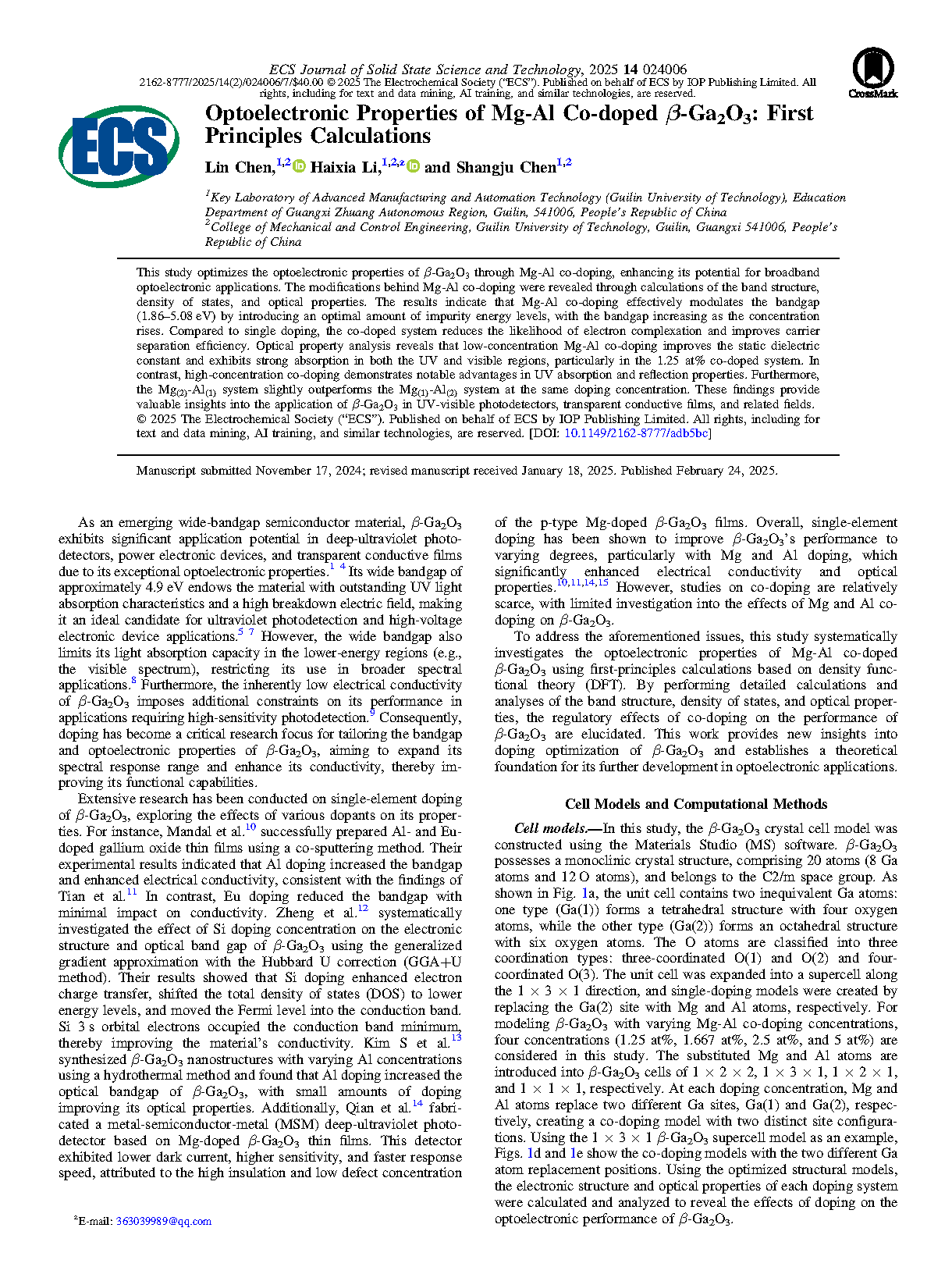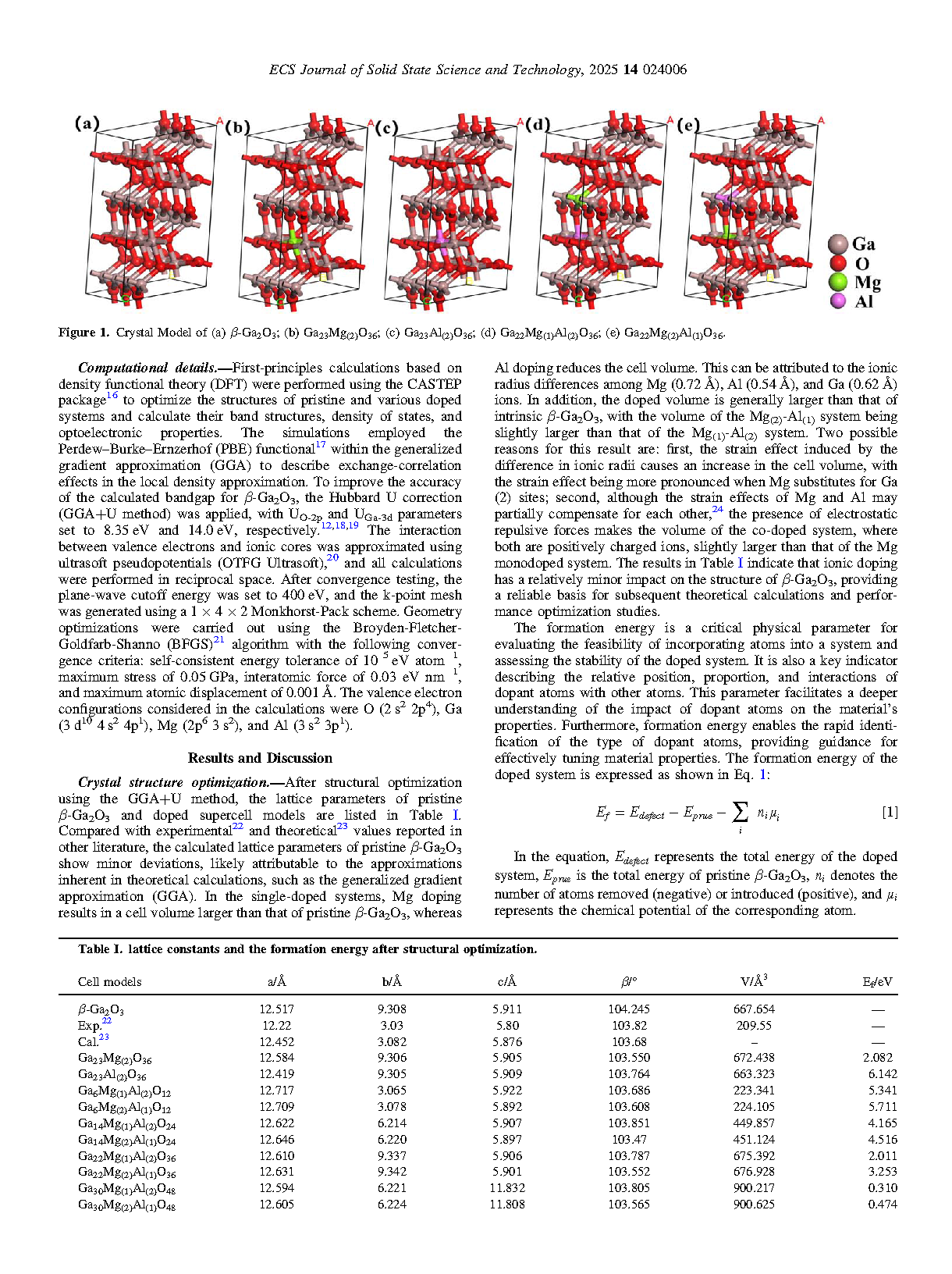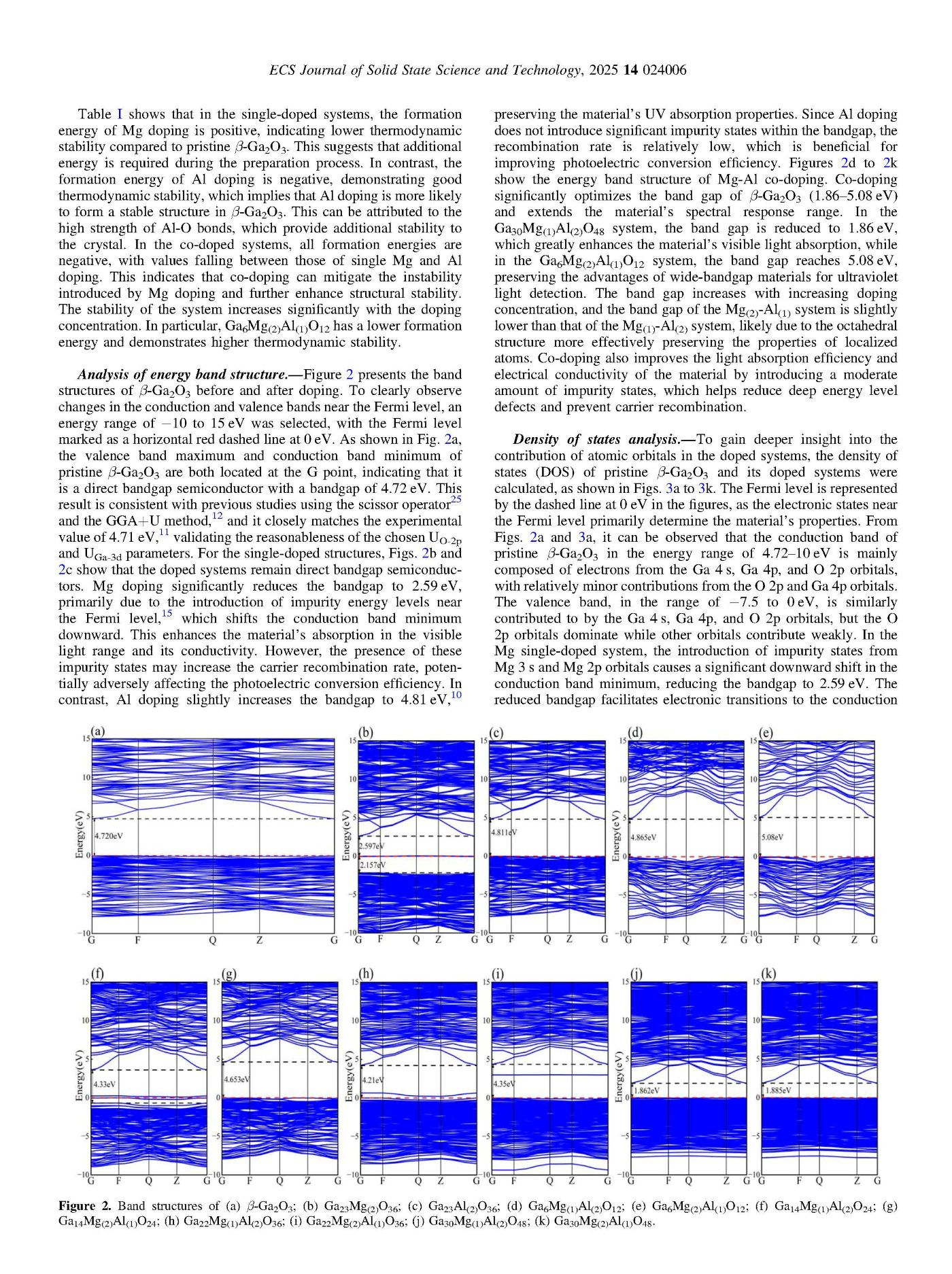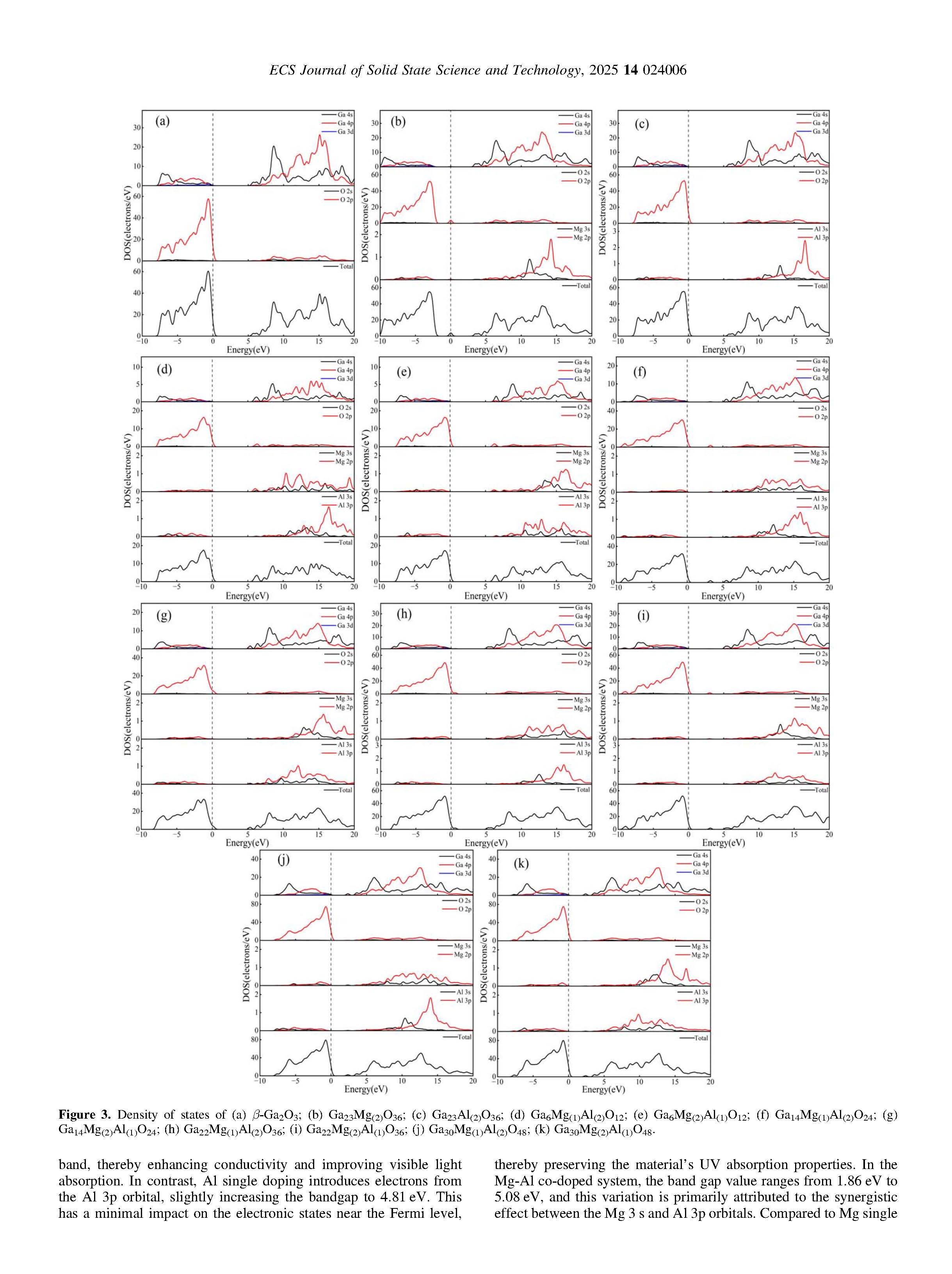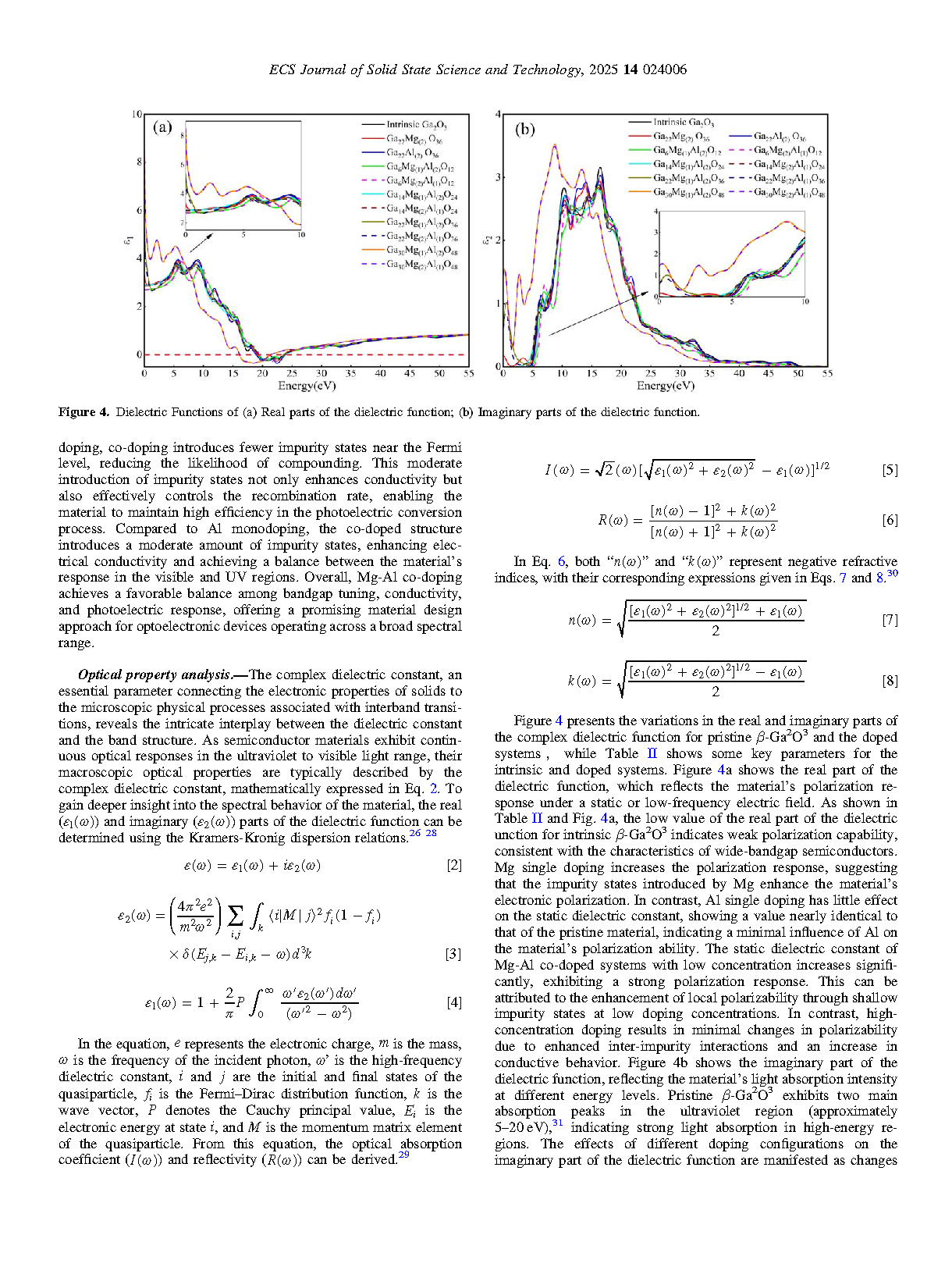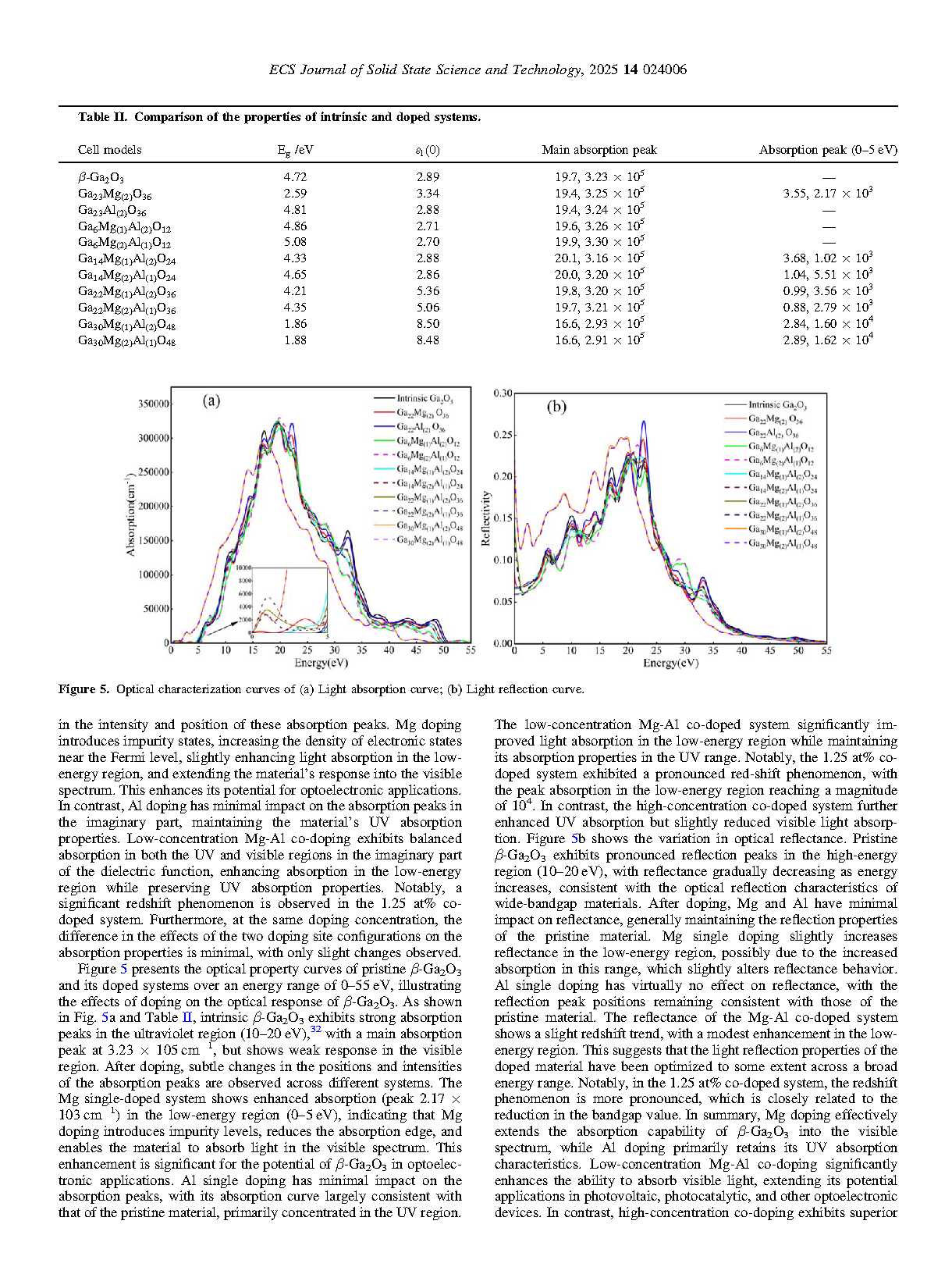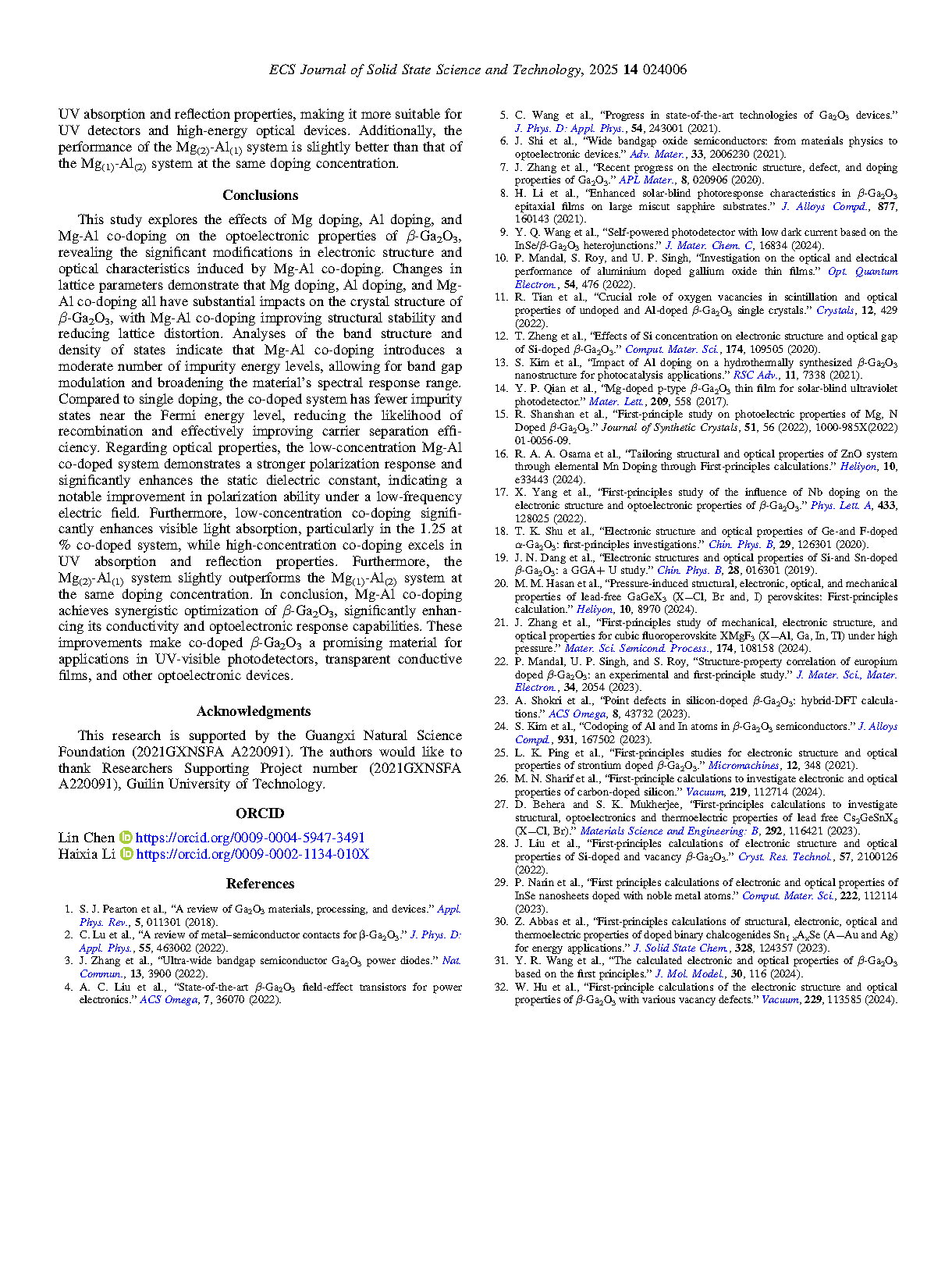
【Domestic Papers】Guilin University of Technology---Optoelectronic Properties of Mg-Al Co-doped β-Ga₂O₃: First Principles Calculations
日期:2025-05-12阅读:367
Researchers from the Guilin University of Technology have published a dissertation titled "Optoelectronic Properties of Mg-Al Co-doped β-Ga2O3: First Principles Calculations" in ECS Journal of Solid State Science and Technology.
Acknowledgments
This research is supported by the Guangxi Natural Science Foundation (2021GXNSFA A220091). The authors would like to thank Researchers Supporting Project number (2021GXNSFA A220091), Guilin University of Technology.
Background
As an emerging wide-bandgap semiconductor material, β-Ga2O3 exhibits significant application potential in deep-ultraviolet photodetectors, power electronic devices, and transparent conductive films due to its exceptional optoelectronic properties. Its wide bandgap of approximately 4.9 eV endows the material with outstanding UV light absorption characteristics and a high breakdown electric field, making it an ideal candidate for ultraviolet photodetection and high-voltage electronic device applications. However, the wide bandgap also limits its light absorption capacity in the lower-energy regions (e.g., the visible spectrum), restricting its use in broader spectral applications. Furthermore, the inherently low electrical conductivity of β-Ga2O3 imposes additional constraints on its performance in applications requiring high-sensitivity photodetection. Consequently, doping has become a critical research focus for tailoring the bandgap and optoelectronic properties of β-Ga2O3, aiming to expand its spectral response range and enhance its conductivity, thereby improving its functional capabilities.
Abstract
This study optimizes the optoelectronic properties of β-Ga2O3 through Mg-Al co-doping, enhancing its potential for broadband optoelectronic applications. The modifications behind Mg-Al co-doping were revealed through calculations of the band structure, density of states, and optical properties. The results indicate that Mg-Al co-doping effectively modulates the bandgap (1.86–5.08 eV) by introducing an optimal amount of impurity energy levels, with the bandgap increasing as the concentration rises. Compared to single doping, the co-doped system reduces the likelihood of electron complexation and improves carrier separation efficiency. Optical property analysis reveals that low-concentration Mg-Al co-doping improves the static dielectric constant and exhibits strong absorption in both the UV and visible regions, particularly in the 1.25 at% co-doped system. In contrast, high-concentration co-doping demonstrates notable advantages in UV absorption and reflection properties. Furthermore, the Mg(2)-Al(1) system slightly outperforms the Mg(1)-Al(2) system at the same doping concentration. These findings provide valuable insights into the application of β-Ga2O3 in UV-visible photodetectors, transparent conductive films, and related fields.
Conclusions
This study explores the effects of Mg doping, Al doping, and Mg-Al co-doping on the optoelectronic properties of β-Ga2O3, revealing the significant modifications in electronic structure and optical characteristics induced by Mg-Al co-doping. Changes in lattice parameters demonstrate that Mg doping, Al doping, and Mg-Al co-doping all have substantial impacts on the crystal structure of β-Ga2O3, with Mg-Al co-doping improving structural stability and reducing lattice distortion. Analyses of the band structure and density of states indicate that Mg-Al co-doping introduces a moderate number of impurity energy levels, allowing for band gap modulation and broadening the material's spectral response range. Compared to single doping, the co-doped system has fewer impurity states near the Fermi energy level, reducing the likelihood of recombination and effectively improving carrier separation efficiency. Regarding optical properties, the low-concentration Mg-Al co-doped system demonstrates a stronger polarization response and significantly enhances the static dielectric constant, indicating a notable improvement in polarization ability under a low-frequency electric field. Furthermore, low-concentration co-doping significantly enhances visible light absorption, particularly in the 1.25 at% co-doped system, while high-concentration co-doping excels in UV absorption and reflection properties. Furthermore, the Mg(2)-Al(1) system slightly outperforms the Mg(1)-Al(2) system at the same doping concentration. In conclusion, Mg-Al co-doping achieves synergistic optimization of β-Ga2O3, significantly enhancing its conductivity and optoelectronic response capabilities. These improvements make co-doped β-Ga2O3 a promising material for applications in UV-visible photodetectors, transparent conductive films, and other optoelectronic devices.

Figure 1. Crystal Model of (a) β-Ga2O3; (b) Ga23Mg(2)O36; (c) Ga23Al(2)O36; (d) Ga22Mg(1)Al(2)O36; (e) Ga22Mg(2)Al(1)O36.
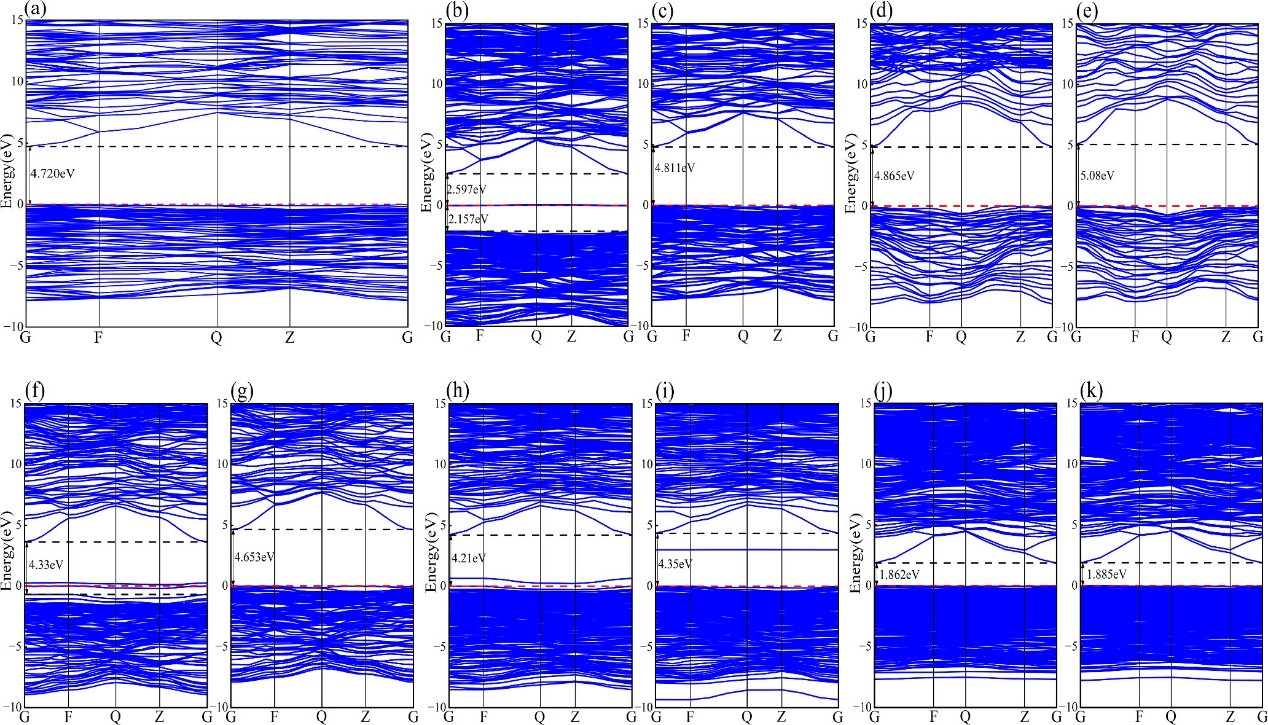
Figure 2. Band structures of (a) β-Ga2O3; (b) Ga23Mg(2)O36; (c) Ga23Al(2)O36; (d) Ga6Mg(1)Al(2)O12; (e) Ga6Mg(2)Al(1)O12; (f) Ga14Mg(1)Al(2)O24; (g) Ga14Mg(2)Al(1)O24; (h) Ga22Mg(1)Al(2)O36; (i) Ga22Mg(2)Al(1)O36; (j) Ga30Mg(1)Al(2)O48; (k) Ga30Mg(2)Al(1)O48.
DOI:
doi.org/10.1149/2162-8777/adb5bc
